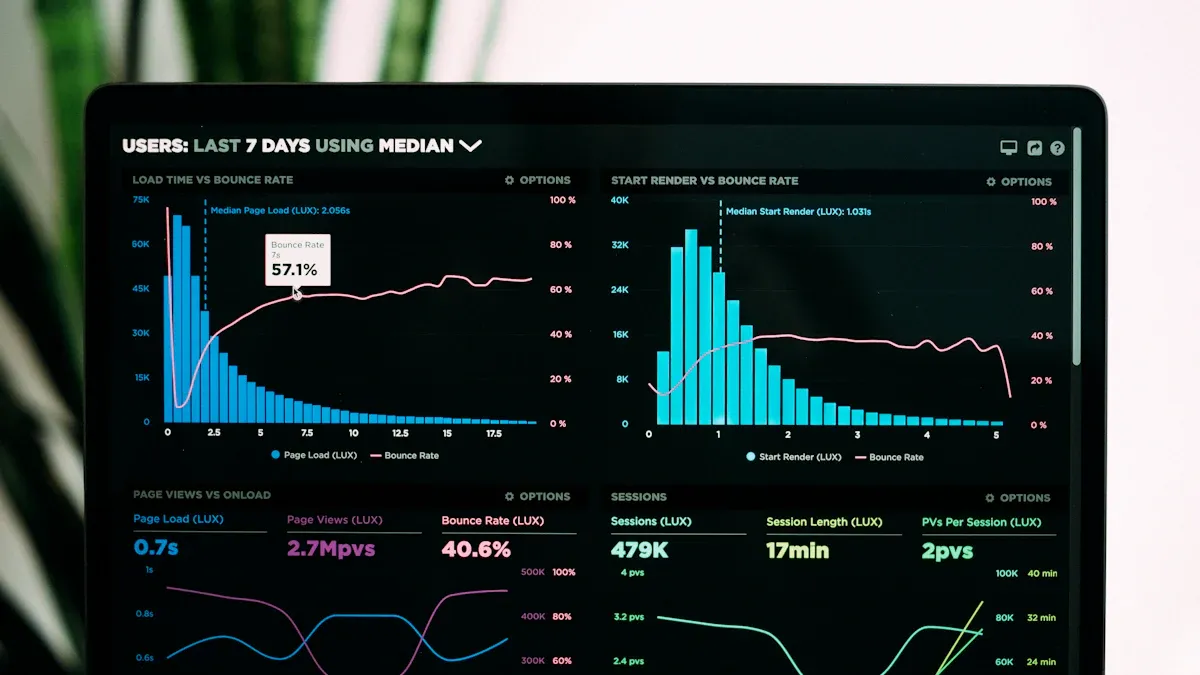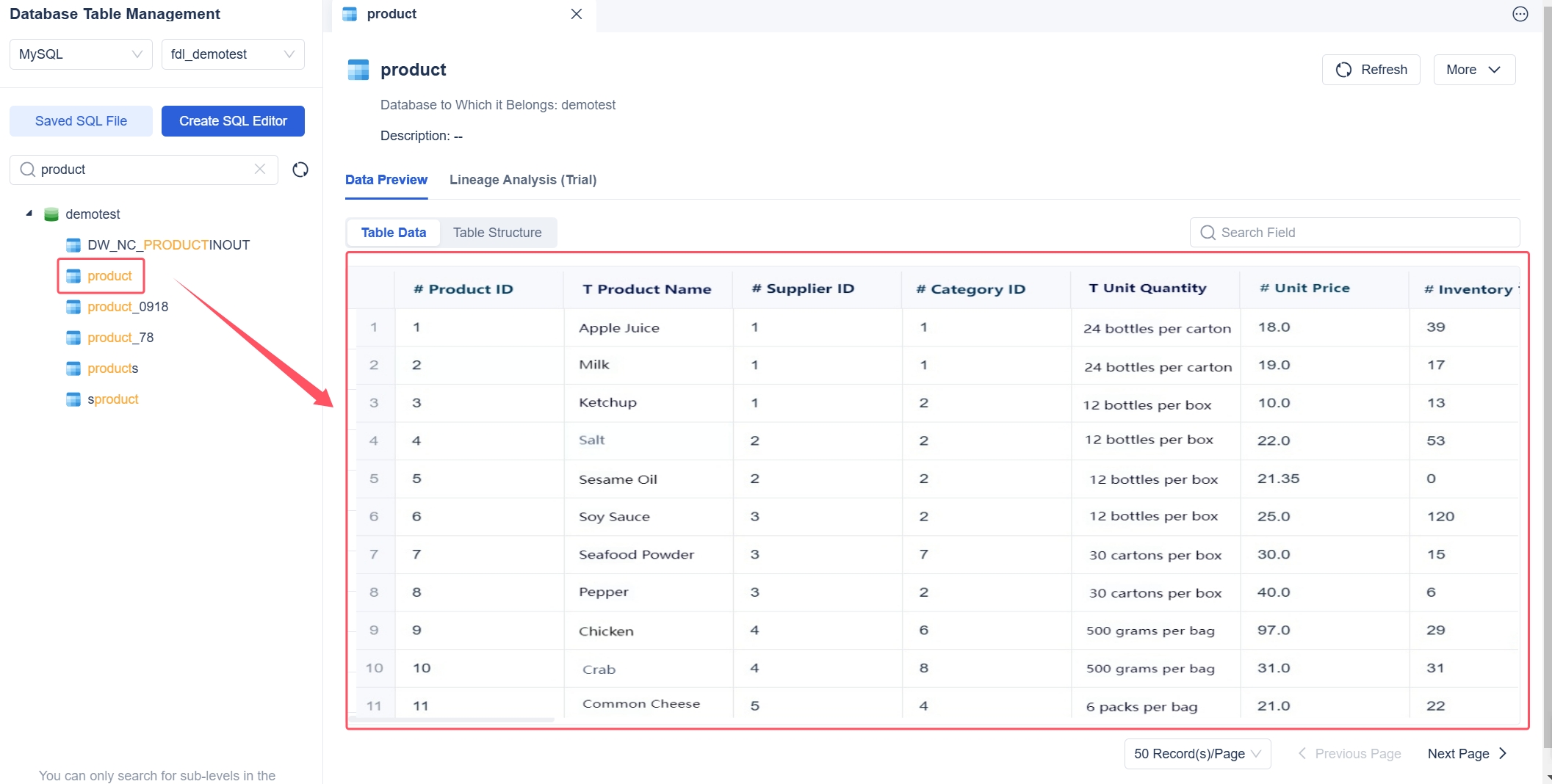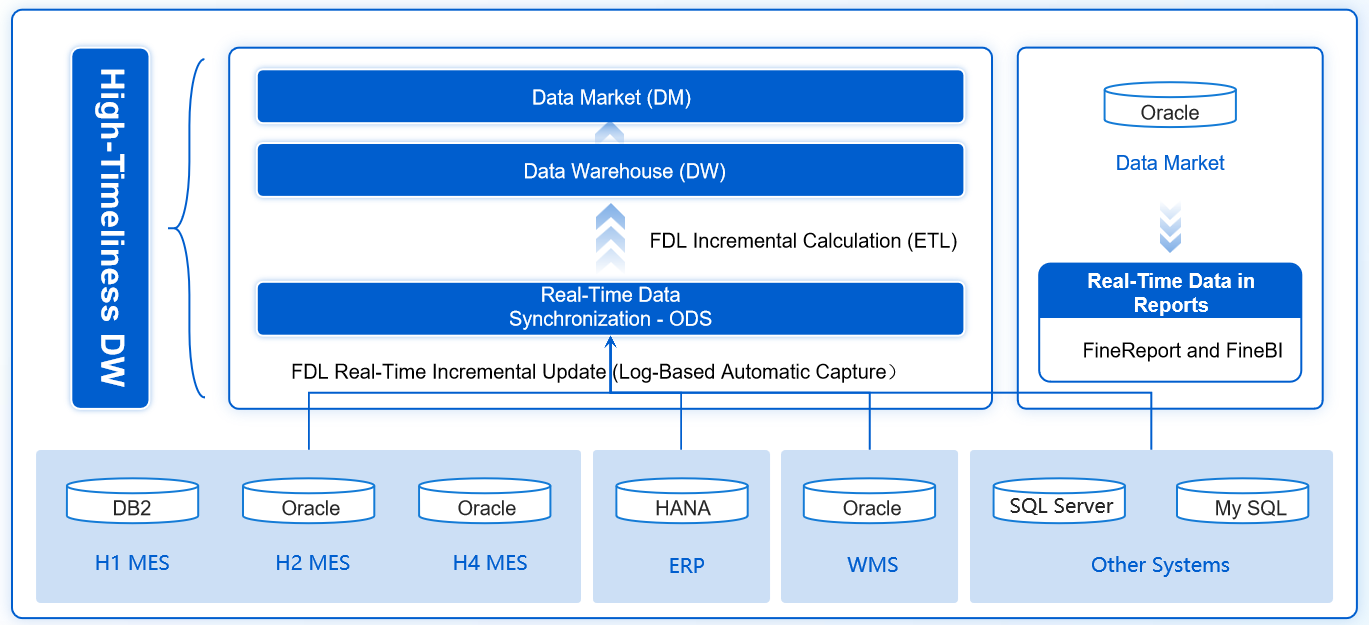A data strategy roadmap gives you a clear, step-by-step plan to align your data initiatives with business goals. When you integrate data across systems, you unlock new levels of business performance.
| Key Findings | Implications for Business Performance |
|---|---|
| Strengthened relationships with suppliers improve operational performance. | This directly enhances manufacturers' operational performance and indirectly boosts financial performance. |
| Internal and external information integration is crucial. | It drives financial performance, especially in demand-driven manufacturing contexts. |
Many organizations face common pitfalls in their data strategy, such as siloed data, lack of data quality, and limited technical expertise. Platforms like FineDataLink help you overcome these challenges with practical, accessible tools that work for both technical and non-technical teams.
Data Strategy Roadmap Team

Team Assembly
Building a strong team is the first step in your data strategy roadmap. You need a group with diverse skills and clear roles. Each member brings unique expertise to your data strategy. In enterprise environments, you often see these essential roles:
- Data Governance Council
- Data Governance Officers
- Data Governance Managers
- Data Owners
- Data Stewards
- Technical Custodians
- Data Security and Privacy professionals
You should select individuals who understand both business needs and technical requirements. This approach ensures your data strategy covers every angle. When you assemble your team, you may face several challenges. These can slow down your progress if you do not address them early.
| Challenge | Description |
|---|---|
| Resistance to change | Changes to processes and culture can cause pushback. Clear communication helps gain support. |
| Lack of data literacy | Team members may not understand data. Training builds a data-driven culture. |
| Inability to measure progress | Without metrics, you cannot track success. Set clear goals and review them often. |
| Poor change management processes | A solid plan helps your team adopt new strategies smoothly. |
| Lack of time | Break your roadmap into smaller projects to manage time better. |
| Lack of executive support | You need leadership backing. Present a strong business case to gain support. |
| Lack of organizational focus | Stay aligned with company goals to avoid distractions. |
| Lack of data quality | Poor data quality hurts decisions. Set standards and procedures for quality. |
| Lack of data governance and security | Clear policies and compliance measures are vital as your data use grows. |
| Siloed data | Unified architecture breaks down silos and enables sharing. |
| Lack of technical expertise | Invest in training or hire skilled staff for your data strategy. |
| Limited resources | Prioritize initiatives and allocate resources wisely. |
Stakeholder Identification
You must identify all stakeholders early in your data strategy roadmap. Stakeholders include anyone who uses, manages, or benefits from your data. This group often includes executives, department heads, IT staff, and end users. When you involve stakeholders from the start, you create buy-in and reduce resistance to your data strategy. You should communicate the value of your strategy to each group. This step helps everyone understand their role and the benefits of a unified approach. By engaging stakeholders, you set the stage for a successful data strategy roadmap that aligns with your business goals.

Data Strategy Roadmap Objectives
Business Alignment
You need to align your data strategy with your business goals to create a successful data strategy roadmap. Start by understanding what your organization wants to achieve. This step helps you connect every data initiative to a clear business outcome. Use these methods to align your data strategy objectives with your overall business goals:
- Understand business objectives. Learn what your company wants to accomplish in the long term.
- Assess your current data landscape. Review your existing data assets and governance practices to find gaps.
- Identify data requirements. Work with stakeholders to determine what data you need for each goal.
- Establish a governance framework. Define who manages and uses data in your organization.
- Develop a scalable data architecture. Design systems that support your data needs now and in the future.
- Implement data management processes. Make sure your data stays accurate and secure.
- Measure and iterate. Track key performance indicators and gather feedback to improve your data strategy.
Focus on solving business problems instead of just using technical tools. Apply data governance from the moment you collect data to the point where you use it. Automate processes to help your data engineering teams work more efficiently. When you follow these steps, you create a data strategy that supports your business and drives results.
Data Goals
Setting clear data strategy goals gives your team direction and helps you measure progress. You should define what you want to achieve with your data, such as improving customer experience or increasing operational efficiency. Clear goals make it easier to track success and adjust your strategy when needed. The benefits of setting data strategy goals include:
| Measurable Benefit | Description |
|---|---|
| Alignment with business objectives | Every data activity supports a clear objective, such as improving customer experience. |
| Improved data quality | Policies for accuracy, security, and compliance lead to reliable information. |
| Smarter decision-making | Teams trust and access consistent data, enabling quick, confident decisions based on facts. |
| Maximized technology investments | Technology choices connect to long-term goals, helping you avoid unnecessary tools. |
| Fostering a data-driven culture | Structure and guidance help employees understand how data supports their work. |
You should review your data strategy goals regularly. This habit keeps your data strategy roadmap relevant and effective. When you set and measure data goals, you build a strong foundation for your entire data strategy.
Assess Current Data Environment in Data Strategy Roadmap

Understanding your current data environment is a vital step in building a successful data strategy roadmap. You need to know where your data comes from, how you store it, and which tools you use. This assessment helps you identify gaps and opportunities for improvement in your data strategy.
Data Sources Review
Start by reviewing all the data sources in your organization. You should look at both primary and secondary sources. Primary sources include surveys, interviews, observations, experiments, and focus groups. Secondary sources cover publicly available data, government databases, and academic research. The table below shows common types of data sources you might encounter during your assessment:
| Type of Data Source | Description |
|---|---|
| Primary Data Sources | Data collected firsthand for a specific research purpose. |
| Surveys | Gather insights through questioning a targeted audience. |
| Interviews | In-depth understanding of individual perspectives. |
| Observations | Directly witnessing and recording behaviors or events. |
| Experiments | Manipulating variables to understand cause-and-effect relationships. |
| Focus Groups | Group discussions to gather collective insights on a topic. |
| Secondary Data Sources | Pre-existing data collected for different purposes. |
| Publicly Available Data | Information accessible to the public from various entities. |
| Government Databases | Reliable data maintained by government agencies across various domains. |
| Academic Research | Scholarly articles and studies providing in-depth analysis and findings. |
You should document each source and evaluate its relevance to your data strategy. This process ensures you use high-quality data that supports your business goals.
Technology Stack
Your technology stack plays a key role in your data strategy roadmap. The right tools help you manage, store, and analyze data efficiently. When you choose a technology stack, you should consider several factors:
- A suitable technology stack enhances data quality and helps you meet compliance requirements.
- It supports your overall data management framework, which is essential for achieving business goals.
- Modular infrastructure allows you to upgrade and integrate new technologies easily.
- Cloud-based solutions provide scalability, so you can manage large data volumes as your company grows.
You should review your current tools and platforms to see if they align with your data strategy. This step helps you identify areas for improvement and plan future upgrades.
FineDataLink Integration
FineDataLink offers powerful integration features that support your data strategy roadmap. You can use FineDataLink to connect multiple data sources, automate data development, and synchronize data in real time. The platform provides visualized data development, flexible batch synchronization, and a variety of data transformation operators. FineDataLink’s real-time data pipeline uses a high-performance synchronization engine, which improves the time sensitivity of your data warehouse and supports error queue and resumable upload. You can release processed data as APIs for secure, code-free cross-domain transmission. The platform also offers agile task operation and maintenance, including real-time task status, flexible schedule configuration, and enterprise-level permission management.
| Feature | Description |
|---|---|
| Data Development | Visualized data development, flexible application, batch synchronization, and various data transformation operators. |
| Real-Time Data Pipeline | High-performance synchronization engine, enhances data warehouse time sensitivity, and supports error queue and resumable upload. |
| Data Service | Enables secure, code-free cross-domain data transmission by releasing processed data as APIs. |
| Agile Task Operation and Maintenance | Provides real-time task status, flexible schedule configuration, and enterprise-level permission management. |
FineDataLink helps you break down data silos and build a unified data environment. You can streamline your data strategy and improve efficiency across your organization.

Data Strategy Roadmap Framework
A strong data strategy framework helps you build a successful data strategy roadmap. You use this framework to identify gaps, find opportunities, and create a plan that supports your business goals. When you follow a clear data strategy framework, you make sure your data strategy delivers value and drives results.
Gap Analysis
Gap analysis is a key part of your data strategy framework. You compare your current state with your desired future state. This process helps you see where your data strategy needs improvement. You can use several frameworks to guide your gap analysis. The table below shows popular options:
| Framework | Description |
|---|---|
| SWOT analysis | Assesses strengths, weaknesses, opportunities, and threats in your data strategy. |
| McKinsey 7-S model | Examines seven elements that affect your data strategy framework and overall success. |
| Kano model | Prioritizes features in your data strategy roadmap based on user needs and expectations. |
| MoSCoW method | Helps you rank tasks in your data strategy framework as must-haves, should-haves, could-haves, or won't-haves. |
| Ansoff matrix | Guides growth strategies in your data strategy by exploring new markets and products. |
You should choose a framework that fits your organization. When you complete gap analysis, you see where your data strategy framework needs more attention. This step helps you focus your resources and improve your data strategy roadmap.
Opportunities
Your data strategy framework also helps you find new opportunities. You can use your data to create products, improve decision-making, and increase efficiency. You align your data management with business goals and ensure compliance with regulations. You also future-proof your operations and gain a competitive advantage. Here are common opportunities you may discover:
- Use data for productization and monetization.
- Improve decision-making with better data analytics.
- Increase efficiency and productivity by streamlining operations.
- Align data management with business objectives.
- Ensure compliance with data privacy regulations.
- Break down data silos for better integration.
- Enhance data-driven capabilities for future-proofing.
- Leverage AI and machine learning for deeper insights.
- Create a structure for data management that supports your data strategy roadmap.
When you identify these opportunities, you strengthen your data strategy framework. You set your organization up for long-term success and make your data strategy roadmap more effective.
Developing a Data Strategy Roadmap
A successful data strategy roadmap requires a clear and actionable plan. You need to design future data architecture, establish governance and processes, outline implementation steps, set KPIs and timelines, and foster a strong data culture. Each part of this process ensures your data strategy delivers value and supports data-driven insights.
Future Data Architecture
When developing a data strategy, you must design a future data architecture that aligns with your business goals. Start by identifying the data you need based on your strategic objectives. This ensures your architecture supports both current and future needs. Consider these best practices:
- Align your architecture with business goals by selecting data that supports your strategy.
- Implement robust data governance and compliance policies to manage access, quality, and security.
- Choose the right tools, such as relational or NoSQL databases, and consider cloud-based storage for scalability.
A well-designed data architecture forms the backbone of your data strategy roadmap. It enables you to integrate, store, and analyze data efficiently, supporting data-driven decision-making across your organization.
Governance and Processes
Strong governance and clear processes are essential for developing a data strategy that works. You need a governance program that starts with strategic objectives and aligns with your broader business goals.
A clear governance program begins with setting strategic objectives that align with broader business goals. By including data governance in your overall strategic planning, you promote greater consistency and oversight.
To build effective governance and processes, follow these steps:
- Embrace adaptability. Treat governance as an ongoing journey. Adjust your program as your organization and data sources evolve.
- Prioritize change management. Communicate changes clearly to drive user adoption and minimize resistance.
- Focus on intention. Develop a well-defined plan that outlines expectations and objectives.
A strong framework unites people, processes, and technology. It ensures everyone understands how data is defined, accessed, and used. This shared understanding is vital for maintaining data quality and supporting your data strategy roadmap.
Implementation Steps
You need a clear path for data strategy implementation. Low-code tools like FineDataLink make this process accessible, even if you have limited technical resources. Here are actionable steps for developing a data strategy and executing your plan:
- Define your business objectives. Decide what you want to achieve and how data-driven insights will support your goals.
- Identify your data sources. Determine which data will help you reach your objectives.
- Choose a low-code platform. Select a tool that fits your needs and budget.
- Clean and prepare your data. Refine your data so it is accurate and ready for analysis.
- Build your model. Use drag-and-drop features to create predictive models or data flows.
- Train your model. Monitor its learning process to ensure accuracy.
- Test and validate. Evaluate performance to confirm your model works as intended.
- Deploy and monitor. Launch your solution and track its effectiveness over time.
FineDataLink stands out as a recommended tool for real-time data integration, ETL/ELT, and API connectivity. Its low-code and drag-and-drop features simplify complex integration tasks. You can use FineDataLink to build data warehouses and support data governance, making your data strategy roadmap more efficient and scalable. ETL/ELT tools like FineDataLink accelerate data warehouse construction by streamlining integration and enabling real-time synchronization. This reduces computational burdens and boosts development efficiency, especially for large projects.

KPIs and Timelines
Measuring progress is critical in developing a data strategy. You need to set clear KPIs and realistic timelines to track your success. Common KPIs for a data strategy roadmap include:
| KPI | Description |
|---|---|
| Percentage of scope completed | Measures the extent of the roadmap implementation. |
| Monthly engaged data users | Tracks user interaction with data resources. |
| Data value enabled | Assesses the value derived from data initiatives. |
| Employee satisfaction | Evaluates ease of use and satisfaction with data. |
| Time-to-Insight | Measures the speed of deriving insights from data. |
| Model accuracy | Evaluates the precision of predictive models. |
| Data quality score | Assesses the overall quality of the data. |
| Query performance | Tracks the efficiency of data queries. |
| Dashboard load time | Measures the responsiveness of data visualization tools. |
| ROI of data projects | Evaluates the return on investment for data initiatives. |
| Improved conversion rates | Measures the effectiveness of data-driven strategies. |
| Cost savings from predictive maintenance | Assesses financial benefits from data initiatives. |
| Enhanced fraud detection | Evaluates the success of data in reducing fraud. |
Timelines for data strategy implementation vary by industry. You might follow this general schedule:
| Timeframe | Key Activities |
|---|---|
| First 2 Months | Analyze current systems, conduct audits, evaluate data quality, review security infrastructure. |
| Months 2-4 | Refine data management strategies, consolidate data, establish data governance policies. |
| Ongoing | Monitor KPIs, adapt strategy based on changing business needs. |
Set milestones and review your progress regularly. This approach helps you adapt your data strategy roadmap as your business evolves.
Data Culture
Fostering a strong data culture is essential for developing a data strategy that lasts. You need to create an environment where everyone values data-driven insights and uses them to guide decisions. Effective strategies include:
- Define a clear vision and goals. Show how a data-driven culture supports your mission.
- Secure leadership buy-in. Leaders should model and advocate for data use.
- Invest in data literacy programs. Train employees to understand and use data.
- Democratize data access. Make sure everyone can access the data they need.
- Create cross-functional data teams. Encourage collaboration on analytics projects.
- Leverage modern data platforms. Adopt scalable solutions for storage and analytics.
- Promote data-driven success stories. Share examples to demonstrate the benefits.
- Foster curiosity. Encourage employees to explore and experiment with data.
- Align incentives. Reward behaviors that support data-driven decision-making.
- Monitor and evolve. Regularly assess your progress and adjust your approach.
FineDataLink supports your efforts to build a data-driven culture. It enables seamless data integration, real-time analytics, and efficient data governance. You can set KPIs, monitor progress, and establish feedback loops to drive continuous improvement. FineDataLink’s low-code platform makes it easy for both technical and non-technical users to participate in developing a data strategy and using data for business growth.
A well-executed data strategy roadmap empowers your organization to unlock data-driven insights, improve efficiency, and stay competitive. By following these steps and leveraging tools like FineDataLink, you can ensure your data strategy delivers measurable results.

Monitor and Improve Data Strategy Roadmap
Progress Tracking
You need to track progress to keep your data strategy roadmap on course. Regular review helps you see what works and where you need to adjust. Many organizations use several methods to measure progress in their data strategy. You can use the table below to guide your tracking process:
| Method | Description |
|---|---|
| Track impact in business terms | Measure ROI in dollars saved or earned, and highlight efficiency gains. |
| Show adoption and usage | Monitor who uses reports, dashboards, or models, and how often they use them. |
| Re-score and re-prioritize | Use quarterly checkpoints to update feasibility and value scoring. |
| Highlight readiness and gaps | Identify capacity issues, skills gaps, or dependencies that could slow delivery. |
| Anchor on the bigger picture | Connect milestones to company objectives to build trust in your data strategy roadmap. |
You should set clear milestones and review them often. This approach helps you keep your data strategy aligned with business goals. When you track adoption and usage, you can prove the value of your data strategy to stakeholders.
FineDataLink supports your progress tracking with real-time monitoring and reporting features. You can see data flows, track usage, and generate reports that show the impact of your data strategy. Organizations using real-time analytics often see up to 20% productivity improvement and 15% higher operational efficiency. Real-time monitoring also helps reduce fraud and anticipate risks.
Continuous Improvement
You must treat your data strategy as a living plan. Regular updates keep your data strategy roadmap aligned with changing business needs. Many companies follow a simple process for continuous improvement:
- Assess and align your current data environment with business objectives.
- Design your target state, including future architecture and governance.
- Prioritize and update your roadmap, deliver value through MVPs, and monitor progress.
You should also update your data strategy when your business changes. Mergers, new products, or shifts in the market can all affect your roadmap. Regular reviews help you stay ahead of regulatory changes and new technology.
FineDataLink makes continuous improvement easier. Its real-time monitoring tools let you spot issues early and adjust your data strategy quickly. You can use feedback from stakeholders to refine your roadmap and deliver better results. Companies using real-time analytics are 23 times more likely to acquire new customers and 52% more likely to anticipate risks.
By tracking progress and focusing on continuous improvement, you ensure your data strategy roadmap delivers ongoing value. This approach helps your organization stay competitive and data-driven.

You can build a successful data strategy roadmap by following a clear, step-by-step approach. Start by identifying business challenges and forming a strong data team. Align your data strategy with business goals to drive real value and improve decision-making. Secure organizational buy-in and establish a governance charter for effective collaboration. Use tools that simplify data integration and strategy execution. Organizations that optimize for decision speed and formal value capture report much higher ROI from their data initiatives. Take action now to modernize your data strategy and unlock growth.

Continue Reading About Data Strategy Roadmap
Enterprise Data Integration: A Comprehensive Guide
What is enterprise data and why does it matter for organizations
Understanding Enterprise Data Centers in 2025
Enterprise Data Analytics Explained for Modern Businesses
FAQ

The Author
Howard
Engineer Data Management & Ahli Data Research Di FanRuan
Related Articles

Data Hub vs Data Lake Key Differences and Use Case Explained
Data hub vs data lake: Compare structure, governance, and use cases to choose the right solution for your data integration and analytics needs.
Howard
Nov 09, 2025

What is a Product Master Data Model and Why Does It Matter
A product master data model centralizes product information, ensuring accuracy, consistency, and better business decisions across all systems.
Howard
Nov 09, 2025

Implement Data Governance Use Cases for Better Data Quality
Implement data governance use cases to boost data quality, ensure compliance, and enable accurate, reliable decision-making across your organization.
Howard
Nov 09, 2025



